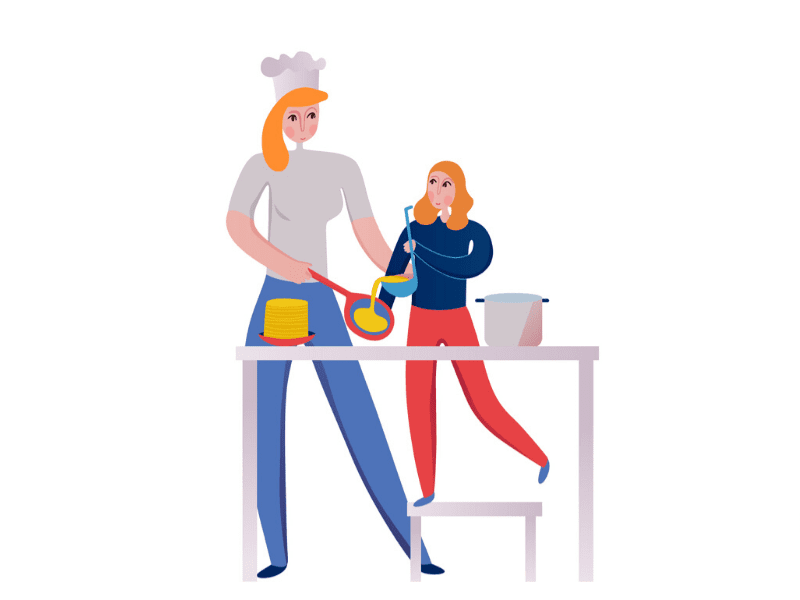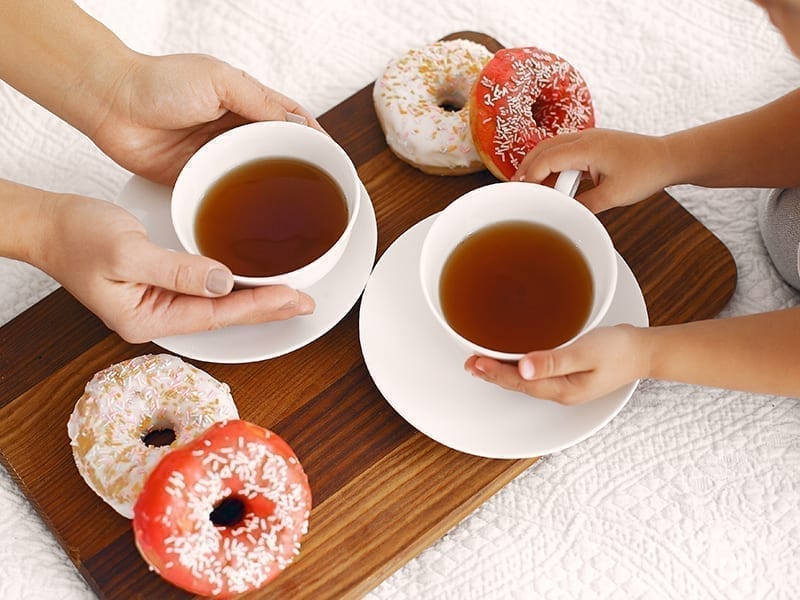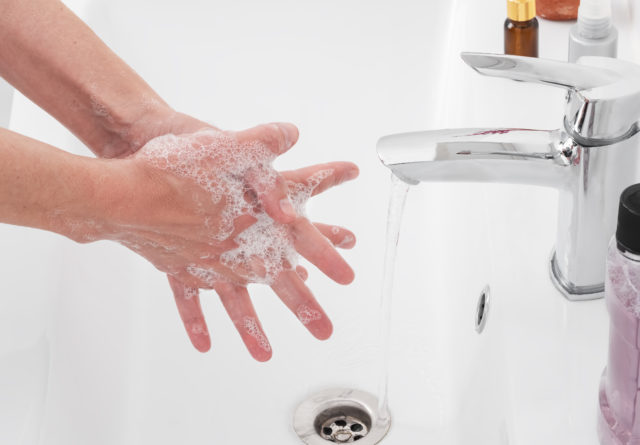Manners and etiquette never run out of trend. They have always been and will continue to be a very important part of a person’s life. They may amount to almost nothing quantitatively, but the smallest of acts may reflect significantly on the person’s character and upbringing. Hence, it is necessary to teach good table manners and dining etiquette from an early age, so they become a part of their habit.
By dining etiquette, we don’t mean the kids need to learn the use of four different forks and knives. No, that they may learn when they grow up and have an opportunity to dine with royalty.
For now, let’s discuss basic table manners and table etiquette for kids.
It is essential to understand that table etiquette and manners are not a one-time thing. They require constant practice, so ensure it is done regularly at home and not just when you are a guest or dining at a restaurant.
Table Manners You Must Teach Your Kids
1. Washing Hands Before Coming To The Table
Older kids are addicted to their phones, and as we know our phones are a breeding ground for bacteria and other germs. On the other hand, younger kids are curious little creatures who explore by putting their hands everywhere, so children need to understand the importance of hygiene before beginning to eat. Whether there is a Coronavirus pandemic or not, washing hands should be a mandatory rule at home.
2. Offering To Help Set Up

This should be an everyday practice at home and also when you are eating at someone else’s house. Even for young kids, encourage them to help, and give them easy tasks like putting table mats or setting the cutlery as this helps them become good hosts and better guests in the future.
3. Waiting Until Everyone Is Served
Whether it is at your home, someone else’s home or a restaurant, it is essential for children to learn to be patient and wait to start eating until everyone at the table is served.
4. No Complaining About The Food
We’ve all heard the ‘yuck’ and ‘eww’ when sprouts or vegetables are served. But it is important that they understand to be considerate of the cook’s feelings. So no more ugly adjectives to be used at home or anywhere else.
5. Offering When Hosting
If you are hosting a dinner party or gathering, it is necessary that kids learn to help around and offer their guests water or serve some food. Offering to take their used plates once they’re done, especially when the guest is an older person or physically challenged.
6. Saying Please And Thank You
Please teach children to use the word, ‘please’. The habit can start easily on the dining table. ‘Please pass the dal.’ ‘Please, may I have the last piece of the pizza?’ And once they have the dal or the last piece of pizza, ‘Thank you.’ One of the most basic table manners is to say ‘thank you’. Thank the host if you are eating at someone’s house. At a restaurant, thank the server or waiter, and the domestic help at home. Encourage them to use these magical words everywhere.
7. No Phones On The Table
Yes, this is a tough one! The digital era has everyone glued to their phones, not just kids. Keep a rule to eat a meal as a family at home, without any cellular distractions. If you are a guest or go out to a restaurant, explain to them how rude it is to be on your phone while others are having a conversation. Also, communicate with children at the table too. Keep adult talk for later, and not just about school, keep it fun and engaging, so the no-phone rule becomes more comfortable to do.
8. No Leaving The Table When Someone Is Eating
Once they are done with their food, they shouldn’t be allowed to just run off to their rooms or video games. They are required to be considerate of older people or people who eat slowly. When leaving the table temporarily, saying ‘excuse me’ is polite.
9. Taking Food Only As Much As We Can Eat
In times when parts of the world are fighting a food crisis, let’s teach our kids to be more thoughtful and avoid wasting food. Take small servings; you can always take more helpings.
10. Post-Meal Manners
Even if domestic help is available, encourage children to pick up their own dirty plates after a meal. Even at a guest’s house, they must at least ask the host where they can keep their dishes. At a restaurant, a simple thank you to the waiter/server, when they pick up the plate, should be polite enough.
Two, putting our chairs back under the table after getting up. This rule is very underrated, and it is necessary to teach our kids to be considerate towards others walking by.
Three, teaching our kids to be kind by offering to help clean up at home or at someone else’s house.
Table Etiquettes You Teach Your Kids
1. Chewing Food
Chewing food with your mouth closed is one of the most important table manners for kids as this habit sets in at an early age, and it is tough to change later. It prevents food from falling out of your mouth. It is also a very unpleasant sight and sounds to others on the table when someone’s mouth is open while chewing.
Another essential dining etiquette is to finish chewing food before speaking or drinking water. It is too early for young kids to learn to put the food on the side of their mouth before talking, but if your kid is old enough, you can demonstrate how to do that. But before drinking water or any beverage, food must be over, lips should be wiped with a napkin to ensure no food particles go in the glass, and no lip stains appear on the glass. This can be taught as per the child’s age.
2. Elbows Off The Table And No Slouching
While eating, our posture should be right, slouching indicates that the person is disinterested in the food. Elbows should be off while eating. However, you can put them on the table between courses while having conversations.
3. Napkin On The Lap
Once your child is seated, show them how to put the napkin on the lap. If your finger or mouth needs wiping in between meals, discreetly do it with the help of the napkin. The napkin needs to be left on the seat, not on the table when they excuse themselves to the washroom.
4. Picking Up The Glass With Another Hand
Eating Indian food involves eating by hand. Hence, a glass should be held with a hand that’s not in use so food stains do not show on the glass.
5. Passing Food On The Table
Instead of leaping over the table to get something, ask to ‘please pass’. Older kids can learn to pass the food to others depending on their age.
6. Eating With Cutlery
For slightly older kids, the knife and fork method can be taught. The dominant hand generally holds the knife as it does the cutting; the fork is to keep the food in its place and to pick up the food. Knives and forks are not to be held like pens. For young kids, if you want them to start early, getting smaller knives and forks would be easier for their grip.
Indian cuisine requires us to eat with our hands; that doesn’t mean it has to be messy. Eating slowly with smaller bites can ensure that hands and mouth get less spoiled. Young kids are going to be messy eaters, so don’t push them too hard.
7. Always Use Serving Spoons To Serve
When self-serving, young kids tend to use their used spoons to serve themselves. The importance of hygiene should be explained here, and smaller serving spoons could be used at the start if you want them to start self-serving. Also, while serving, show them to go slow as the chances of spilling are low.
8. No Burping And Slurping
After a meal, a loud burp used to be a compliment to the cook. However, dining etiquette says quite the opposite. Burping is considered disgusting. However, sometimes when it’s uncontrollable, teaching children to put a napkin by their mouth, burp softly and say excuse me right after it, is acceptable. Making sounds while one eats is quite unpleasant too. If the soup is too hot, blow gently and take a sip. Slurping ought to be a big NO.
9. No Touching Hair On The Table
Many children are fidgety and play with their hair on the table; it is essential to explain hygiene as hair can break easily and enter someone’s food. So avoid tying hair or playing with the hair at the table.
10. Placing The Napkin On The Table After Finishing
At a restaurant or guest’s house, after finishing a meal, demonstrate to your kids how to fold a napkin neatly and place it on the table near the plate with the stained side covered at the bottom.
Table manners for kids are essential, but that will require practice from both sides. Kids watch and learn. Parents are their role models, so ensure that you are following the above pointers first.
With younger kids, appreciate them when they get something right. Also, don’t embarrass them in front of guests. If they are chewing with their mouths open, you can discreetly point or tap your lips, reminding them to chew with their mouths closed.
If your teenage kid handled something well at a party or gathering, show them your appreciation in private, as they feel embarrassed with attention when you have company.
Once they are older, they can learn more about table manners in detail. However, it’s never too early to start teaching them the basics!


